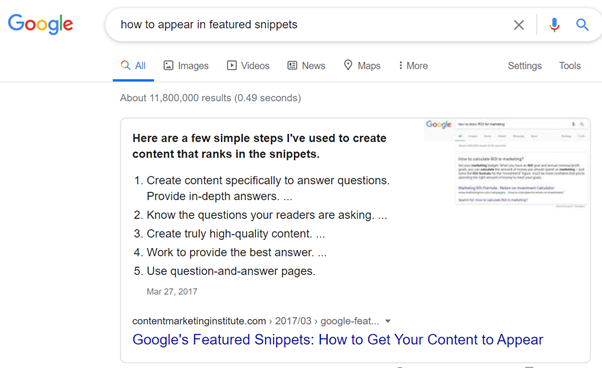What are the secrets of an effective SEO strategy in 2022?

Did you know that 60% of Internet users don't go further than the first three results when searching on Google? Your website probably won't get a lot of organic traffic if your content doesn’t appear in the first results of search engines. In this post, we explain what are the essential SEO criteria for your website to get top search engine ranking in 2022.
Content is king!
Write excellent copy
Even if Google regularly changes its algorithm, which can sometimes change the SEO game, some things remain the same. The content was and remains one of the keys to a successful SEO strategy.
To have your pages appear as a top search result, it is essential to create quality content that answers the needs and questions of Internet users. Your content should be informative, educational and diverse. To do this, work on your content strategy to ensure the diversity of your pages, covering all topics, products and services your audience might be interested in.
Another important point to keep in mind is to make sure you don’t cover the same topic twice in different sections of your website. Search engines penalise duplicate content.
Follow a logical structure
But content is not everything. The form is also crucial to help robots in charge of indexing analyse your page. Pay attention to the formatting of your page and choose the appropriate headings.
Whether it is the title or the headings given to each of your paragraphs, they help structure your text and improve its SEO. Your readers will also thank you for providing them with readable and clear text.
Here is an acceptable content structure:
<Heading 1 - Title>
<Heading 2>
<Heading 3>
<Heading 3>
<Heading 2>
<Heading 3>
<Heading 3>
<Heading 2 - Conclusion>
Don't forget the URL and meta tags
Meta tags are HTML elements that provide information about a web page both for search engines and Internet users.
Google reads your content and judges whether it’s good, bad, useful, or fluffy. Therefore, it’s important that the URL, meta description, title tags, headings, and content talk about the same topic.
Don’t underestimate the importance of writing a good meta title and meta description, as they are obvious elements in search results and will impact the clicking decision.
Tips to write a good title tag:
- Work around your primary keyword and find a long-tail keyword
- Write the most important words first
- Don’t exceed 60 characters
- Include your brand name if possible
Tips to write a good meta-description:
- Use the active voice
- Describe accurately what the page is about
- Include a call to action
- Don’t exceed 130 characters
The power of social media
Content visibility also implies social media. It is very likely that your potential customers all use at least one media, so it is important for your company to have its own presence.
Create quality and engaging content to develop your community. Share links directing to your site's pages and interact with your subscribers, this will only increase traffic to your site and improve its SEO ranking.
Have a sitemap
A sitemap helps search engines find, crawl and index your website’s content. It also tells search engines which pages of your website are most important.
While there are different types of sitemap, the most common one is an XML architecture of your site.
While having a sitemap isn’t compulsory if your pages are properly linked, it’s definitely a bonus point for your site’s SEO, especially if your website is new and doesn’t have too many links yet.
The art of choosing your keywords
Don't fall into the classic trap of picking generic keywords. Obviously, the more popular the keyword is, the more difficult it will be for you to rank high with it on search engines.
This is why it is recommended to work on your so-called "long-tail" keywords, typically comprising between 3 and 5 words.
Practical example:
Generic keyword: robot vacuum
For this generic keyword, Google announces over 94 million results. Imagine that you create a page promoting your robot vacuum. It will be very difficult for your page to get to the top of the results page by focusing on generic keywords. Your page will literally be drowned among millions of others.

Now, let's test a long-tail keyword for the same product: robot vacuum with mopping function.
The number of results for this keyword is reduced to less than 3 million.

By inserting a few long-tail keywords in the name of your page, in the titles of your article, in the content itself and in the meta description, your page will automatically be more targeted and will have a better chance of ranking high in the search engine results.
You don't know how to choose the keywords in question? While there obviously are tools with this function, it is also possible to do a simple search on Google or Amazon. Start typing your generic keyword and you will see which suggestions appear. This gives you a precise idea of what users are searching for.

However, be careful to use keywords sparingly and not to abuse them, you would be penalized by Google. Your content must remain consistent and read in a natural way. The keywords must therefore be inserted with the aim of supporting your content, and not becoming Google’s best friend (or worst enemy, in that case).
The importance of links
Backlinks (links directing to your site) are essential for a higher ranking. These traffic-generating links send "link juice" to your page, allowing it to rank higher in search results.
Search engine robots analyze the number of links pointing to a page in order to reference it. Basically, the more quality backlinks you have on your website, the more likely you are to rank high in search results.
A good way to get backlinks is to write guest articles for other websites. By publishing articles on websites more popular than yours, you advertise your website for free by including backlinks to your pages and you end up gaining new visitors.
The rise of media research
If you think content means text, you are wrong! Don't underestimate the importance of media research.
When people search on Google, they may also be interested in image or video results. Visual formats have the advantage of being more fun than text alone and are in high demand.
So, pay attention to your images and videos when integrating these visuals into your site.
Illustrate your content with images
As far as images are concerned, here are a few tips to take into account to promote SEO:
- Be careful with the name of your file, it must be descriptive and concise.
- The alternative attribute of the HTML code is also essential since it allows you to add text that can be analyzed by search engines to determine the content of the image from its context.
- Do not choose images that will slow down the loading time of your page, as this is one of the factors contributing to search engine rankings.
More engagement with videos
The statistics are clear: a video format leads to a 157% increase in organic traffic coming from search engines, compared to a simple text page. The conversion rate is also improved by 34%. It is therefore important for your company to put some effort into this popular format.
If you want to host your videos directly on your site to boost traffic, make sure you have enough storage space.
Some techniques to optimize your videos for SEO:
- The titles of your videos should clearly indicate what the video is about. Opt for a descriptive title containing a keyword if you think it's relevant. Don't forget the meta tags.
- If you are hosting your video on a third-party platform, don't overlook the description part.
- Transcription helps search engine robots understand what your video is about. We, therefore, recommend that you take the time to add a transcript to your video.
- Choose a thumbnail that will invite the visitor to click on your video. The thumbnail is the first thing that is obvious to the viewer, whether it’s on YouTube or Google.
Don’t forget about voice search
According to Google, voice search represented 20% of total searches in 2019. Comscore predicts that this number could rise to 50% by 2020.
With the popularity of virtual assistants such as Apple Siri, Amazon Alexa and Google Assistant now well established, consider this a good reason to write your content keeping in mind the questions people are likely to ask their device, and the answers you can provide.
Have you heard of featured snippets? It’s that space at the top of the Google results page that displays questions and answers.

According to the Content Marketing Institute, they can drive up to 30% more organic traffic. Virtual assistants often answer questions asked by their owners using these snippets. Since these answers come from websites displayed in the first results, it is crucial to optimize your pages to have a chance to appear in the snippets.
Keep in mind the who, what, where, when, how, how much and why technique to write your headlines. These are the most frequently used interrogative words by people using virtual search. Then, answer the question in your title in a clear and precise way.
Responsive design, a must
It's a fact: more than half of the visits coming from organic traffic are made using a mobile device, be it a smartphone or a tablet. Hence the need to adapt your site's interface to be responsive and user-friendly for mobile users.
Smartphone and tablet optimization will allow your readers to view your pages as comfortably as if they were using a desktop, without having to zoom in and out or switch to landscape mode to view the entire page.
Don't neglect security
Don't forget to fine-tune the security of your website. An unsecured website will automatically lose positions in the search results.
Firstly, because Google's algorithm favours websites with an active SSL certificate, which allows HTTPS protocols. Secondly, because users won't stay on your site if they know it's not secure.
Your domain's impact on your site’s SEO
The relevant domain name
Choosing an appropriate name for your website is essential to support your SEO efforts. Don’t go for a name that has nothing to do with your business, get rid of numbers and special characters. Keep it short, simple and memorable.
So many domain extension
You may not know it, but there are so many domain extensions to choose from. Forget about the traditional .COM and go for a brandable TLD that’s going to boost your SEO efforts.
You’re a technology start-up? Why not go for a .TECH or .TECHNOLOGY? A café owner? You have a choice between .CAFE, .COFFEE and many others. A keyword domain extension that clearly indicates which industry your website belongs to will also boost traffic as your visitors will instantly figure out who you are.
Conclusion
That’s it for the nine main 2022 trends for an effective SEO strategy. Although can be quite time-consuming, a top SEO strategy will allow you to increase your site's visibility, gain traffic, and generate more sales, so be patient!
.GROUP extension: unity for brands and communities
Related articles:
